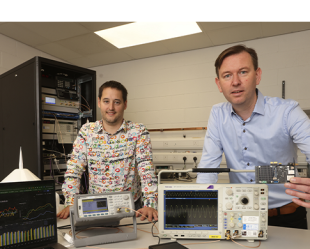NSAI announce three new European Standards to protect children from window blind cords. Loop cords and chains on window blinds pose a strangulation risk for young children and there have been a number of tragic accidents involving children in Ireland in recent years. This has raised safety concerns about window blinds in homes and places where children visit. In response, NSAI published an Irish standard in 2012 to address safety concerns within Ireland as it was anticipated that achieving European wide consensus on these standards would take a number of years. The NSAI standard, I.S. 387 was successful in bridging a two year safety gap in Ireland while the European standards were being developed.
“NSAI and the European Commission recognised the urgent need to update the existing window blind standards; the new standards provide a safety solution which can be applied to new products as well as blinds that have already been installed. Window blind cords that can form loops pose an extremely serious risk to young children, who can become entangled in the cords when playing near windows or climbing on window sills or furniture. It’s important that parents and employers are aware of the dangers and precautions that need to be taken with window blind cords in homes and businesses to ensure children’s safety,” said Maurice Buckley, CEO, NSAI.
The 3 new standards that have been published are:
- ‘Internal blinds – Performance requirements including safety’, EN 13120:2009+A1:2014: This standard amends the previously existing European standard (EN13120) which was published in 2009. It specifies the requirements that internal blinds should fulfil when they are fitted to a building. The amendment expands the scope to cover many types of blinds, while expanding the clause on ‘protection from strangulation; to address specific hazards posed by cords.
- Internal blinds – Protection from strangulation hazards – ‘Test methods’ EN 16433:2014 , this is a new standard that specifies test methods which can be used to verify that a window blind conforms to the requirements relating to protection from strangulation; as specified in EN 13120.
- ‘Internal blinds – protection from strangulation hazards – Requirements and Test methods for safety devices’, EN 16434:2014. This standard specifies the safety requirements for test methods for safety devices that can help to improve the safety of window blinds and prevent accidents. These safety devices can be fitted to window blinds during the manufacturing process or alternatively fitted to window blinds that have already been installed.
The NSAI advises parents of some simple steps that can be taken immediately to remove any potential hazards from existing blinds and help to prevent tragic accidents and fatalities in the home:
- Cords ending in a loop are particularly risky. If possible, cut the cord to get rid of the loop and install tassels;
- Cords should end at least 1.5 metres above the ground so children cannot reach them. Replace cords with curtain or blind wands;
- Where cords cannot be cut, a tie-down or tension device should be used to pull the cord tight and secure it to the floor or wall;
- Never place a child’s cot, bed, playpen or high chair near a window or patio door where a child could reach a curtain or blind cord;
- Keep sofas, chairs, tables, shelves or bookcases away from windows to prevent children climbing up and reaching curtain or blind cords.
- View the additional information and video available from the National Consumer Agency on www.consumerhelp.ie/window-blinds
“Product standards are developed to protect and benefit the consumer and safety is a key priority. NSAI advises Irish manufacturers and suppliers of window blinds to be aware of the current standards. These standards are another step forward in the production of safer products as well as ensuring the safety of retro-fitting of blinds.” said Maurice Buckley.
The European Standard EN 13120: Internal blinds; Performance requirements including safety has existed since 2009. In 2012, NSAI responded to the demand for broader requirements in relation to safety aspects of corded window products in Ireland by developing the Irish Standard, I.S. 387. This set out additional safety requirements which were not specified in EN 13120. Since then, extensive research was carried out in Europe by experts in window blind and child safety, which resulted in the publication of the newly updated European Standard EN 13120. The Irish Standard I.S. 387 will be reviewed in due course.
Those placing blinds on the market should be aware that, EN 13120, although it remains voluntary, will give a presumption of conformance to the General Product Safety Directive when notified in the Official Journal of the European Union. EN 13120 also includes Annex ZA addressing essential requirements of the Machinery Directive.
Download
The NSAI’s library of standards is over 23,000. NSAI invites members of the business community and the general public to get involved in the development of standards by visiting Your Standards, Your Say.
All published standards are also available from www.standards.ie



